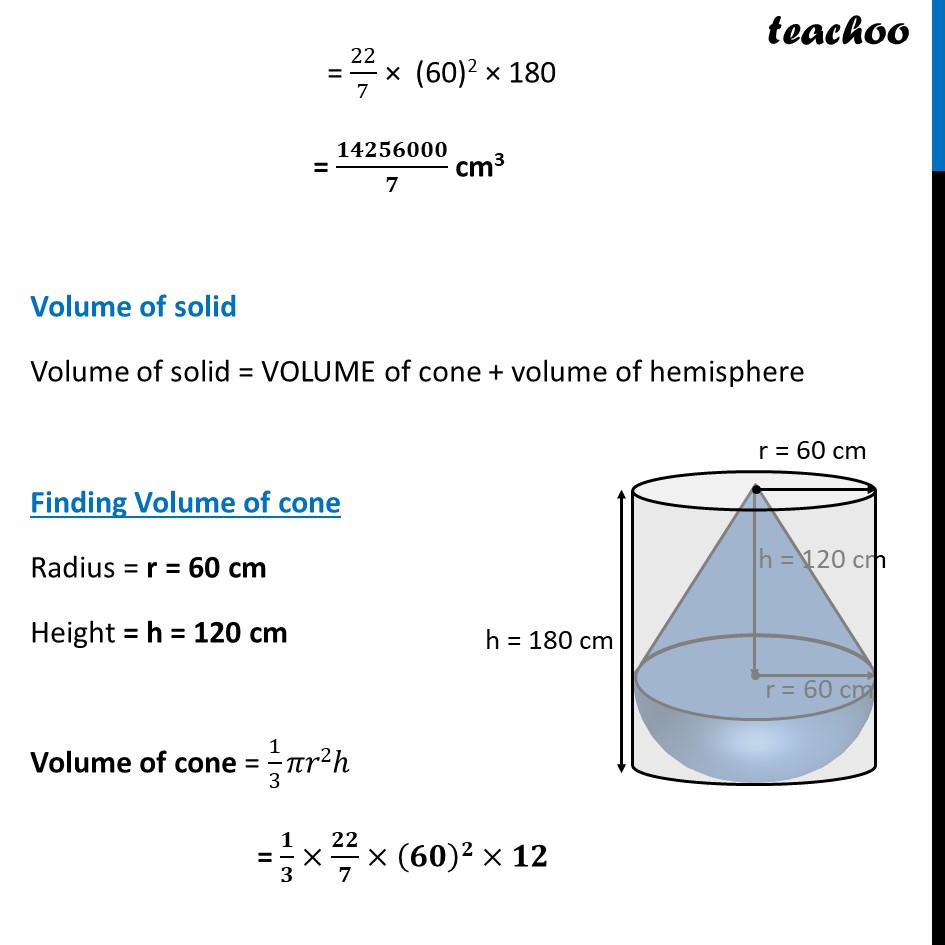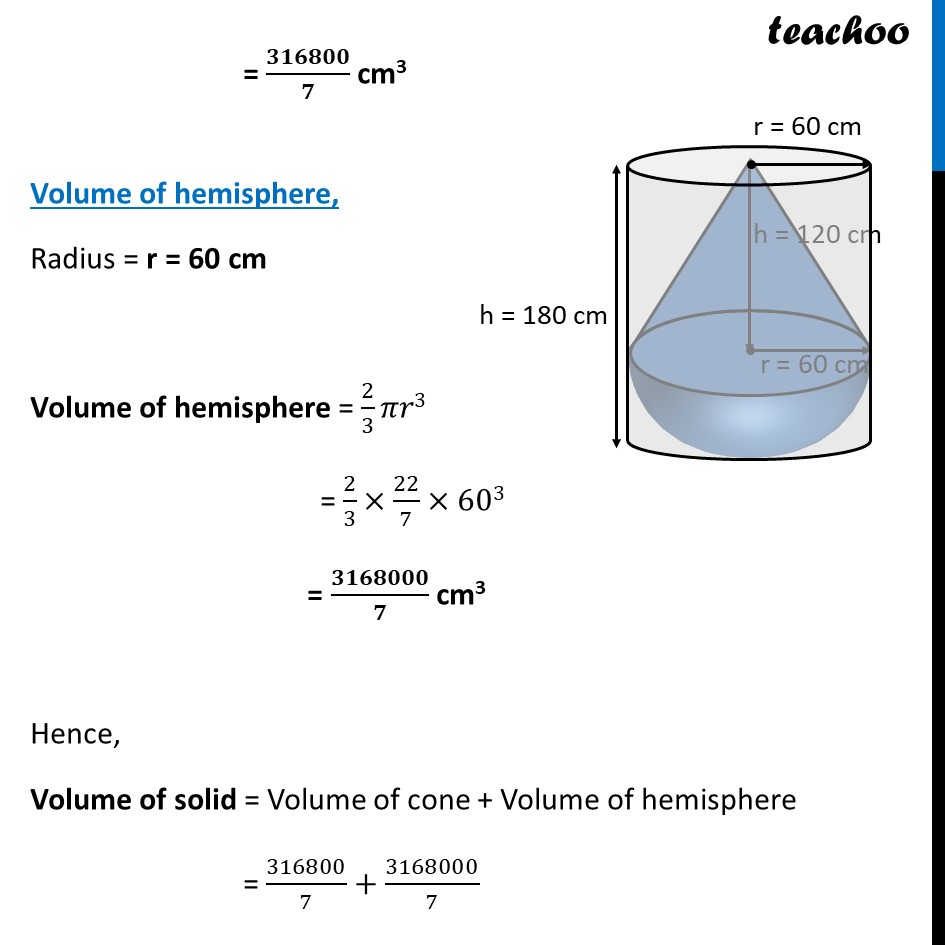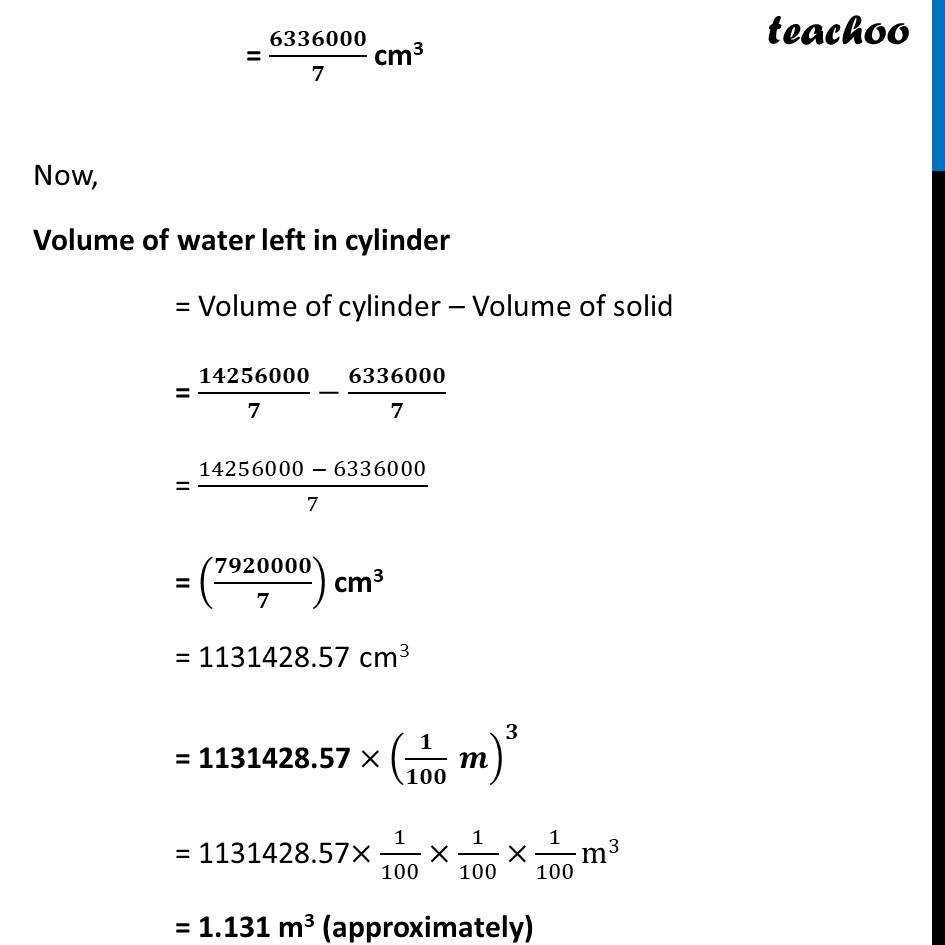



Last updated at Dec. 13, 2024 by Teachoo




Transcript
Ex 12.2, 7 A solid consisting of a right circular cone of height 120 cm and radius 60 cm standing on a hemisphere of radius 60 cm is placed upright in a right circular cylinder full of water such that it touches the bottom. Find the volume of water left in the cylinder, if the radius of the cylinder is 60 cm and its height is 180 cm. Volume of water left in cylinder = Volume of cylinder – Volume of solid Volume of cylinder Radius = r = 60 cm Height = h = 180 cm Volume of outer cylinder = 𝜋𝑟2ℎ = 22/7 × (60)2 × 180 = 𝟏𝟒𝟐𝟓𝟔𝟎𝟎𝟎/𝟕 cm3 Volume of solid Volume of solid = VOLUME of cone + volume of hemisphere Finding Volume of cone Radius = r = 60 cm Height = h = 120 cm Volume of cone = 1/3 𝜋𝑟2ℎ = 𝟏/𝟑×𝟐𝟐/𝟕×(𝟔𝟎)𝟐×𝟏𝟐 = 𝟑𝟏𝟔𝟖𝟎𝟎/𝟕 cm3 Volume of hemisphere, Radius = r = 60 cm Volume of hemisphere = 2/3 𝜋𝑟3 = 2/3×22/7×603 = 𝟑𝟏𝟔𝟖𝟎𝟎𝟎/𝟕 cm3 Hence, Volume of solid = Volume of cone + Volume of hemisphere = 316800/7+3168000/7 = 𝟔𝟑𝟑𝟔𝟎𝟎𝟎/𝟕 cm3 Now, Volume of water left in cylinder = Volume of cylinder – Volume of solid = 𝟏𝟒𝟐𝟓𝟔𝟎𝟎𝟎/𝟕−𝟔𝟑𝟑𝟔𝟎𝟎𝟎/𝟕 = (14256000 − 6336000)/7 = (𝟕𝟗𝟐𝟎𝟎𝟎𝟎/𝟕) cm3 = 1131428.57 cm3 = 1131428.57 ×(𝟏/𝟏𝟎𝟎 𝒎)^𝟑 = 1131428.57×1/100×1/100×1/100 m3 = 1.131 m3 (approximately)